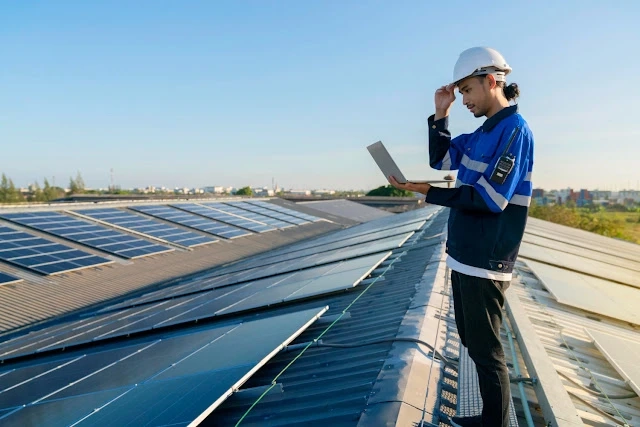Solar energy is one of the primary renewable energy sources. Federal tax deductions and incentives encourage Americans to install solar panel arrays. When installing PV modules, it is important to calculate the electricity consumption of your home or building. Sometimes, it is possible to misestimate or underestimate your energy demand when installing PV, providing you with additional solar energy.
Solar panels provide us with clean energy which is environmentally friendly. Technology continues to evolve, and most homes and businesses can afford it. Solar energy has shown great potential and potential to save on energy costs for homes and businesses. We'll go over some tips to follow when you find you have excess solar power.
Using excess solar energy
When the sun shines, solar radiation is high. As a result, your photovoltaic (PV) system may produce more energy than you consume. There are many ways in which you can take advantage of the situation.
Inject additional solar energy into the grid
Connecting your solar power to the grid is the best way to manage the excess solar energy your home or business generates. When the sun shines, it produces DC electricity, which a grid-connected inverter helps convert into AC electricity. You can use this energy in your business or home.
If the generation of grid-connected PV exceeds consumption, it feeds the surplus into the grid. The electricity you supply to the grid is metered to provide you with credit based on the electricity company you use. This is called net metering.
Solar energy production fluctuates. Production stops at night. The credits you collect when you generate extra solar energy during the day offset the energy you use from the grid at night.
Generating large amounts of solar energy and connecting it to the grid allows for consumption elsewhere. Also, the credit you get for the electricity supply reduces your electricity bill. Most states have mandatory net-metering policies.
How does it work?
Under this option, the system supplies excess energy to the grid. When this happens, the meter runs in reverse. When your production drops or stops, you are now attracted to the system. The back-and-forth movement of the meter ensures that you use excess energy when you cannot produce enough.
If the solar energy system produces more energy than you use in a month, your electricity bill gets a credit based on the net kilowatt-hours you supply to the grid. If you use more electricity than the grid, you buy extra, making up the difference.
Storage of excess photovoltaic energy
There has been a significant increase in the adoption of solar panels across the country. Most people who do not have the option of connecting to the grid can choose to use solar energy to store excess solar energy. You can also use the battery while connected to the grid. Solar batteries are useful in storing energy for later use.
Higher-capacity batteries can store more energy. It does not allow you to store the generated energy and send it to the grid. When the solar modules produce more electricity than your home needs, the excess is stored in the battery. This allows you to drain the battery when the PVs are not generating electricity.
In cases where your panels are still connected to the grid, the battery is fully charged before the system sends additional energy to the grid. So, you continue to draw from your storage system and only draw from the grid when the battery is discharged. You can choose from different types of batteries:
Lead-Acid Solar Battery: This type of battery has been in the market for a long time. This is common in off-the-grid systems. They have a shorter lifespan and shallower depth of discharge than others but are the least expensive.
Lithium-ion batteries: These batteries are more expensive than lead-acid batteries. However, they have a high depth of discharge and a relatively long life. They are lighter and more compact than lead-acid.
Salt Water Battery: Solar technology is always advancing. Saltwater batteries are the newest entry into the market. Although they are currently unavailable, they do not contain heavy metals like the other two. They rely on saltwater electrolytes, making them eco-friendly.
Shifting some load to additional power generation periods
Hotels and residential buildings consume a lot of energy in the morning and evening when solar radiation is low. In such a case, you will see that the consumption of energy does not match its production. To solve this issue energy consumption should be shifted to hours of sunshine and higher energy production.
Businesses like schools, malls, and offices consume electricity during the day. On other days, such as weekends or holidays, energy consumption drops dramatically during these days. Additionally, you will notice that schools shut down their activities during summer vacations when energy production is high.
Ideally, industrial buildings can have high consumption, although they can also experience excess energy production due to inactivity. As you can see from this pattern, solar output is highly dependent on weather conditions.
You can combine all these solar power generation variations to balance consumption and prevent excess power generation. In load management, some load needs to be moved when energy production is high. For this to happen, activities must be flexible. These can include charging electric vehicles, running heavy household appliances, heating water, and more. The best thing about load management is that it does not require additional capital like installing storage capacity. As a result, it is very useful. Managing loads is also cost-effective, guaranteeing a quick payback. If the load management is not fully effective to absorb the energy of the additional PV module, you can combine it with solar energy storage or connection to the grid.


